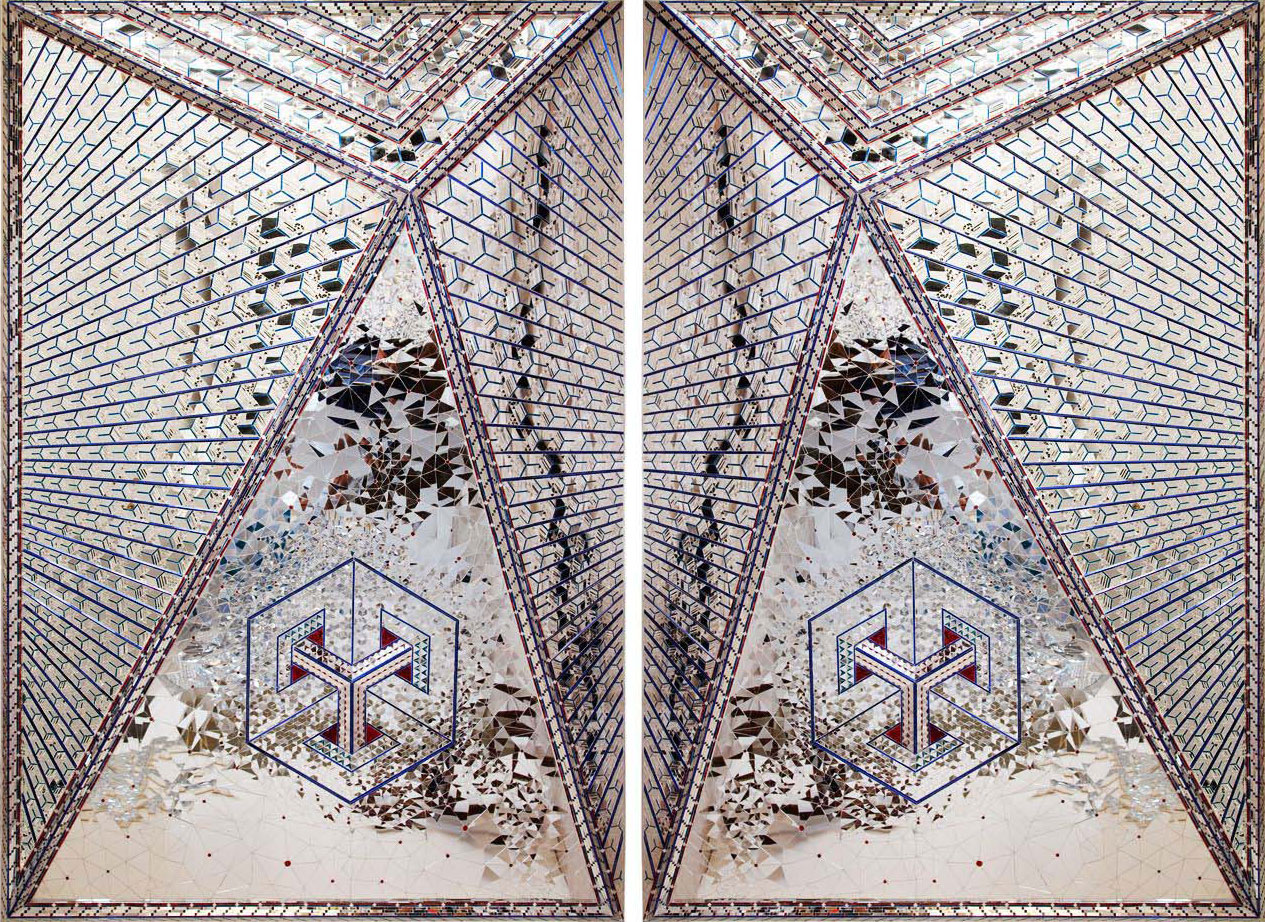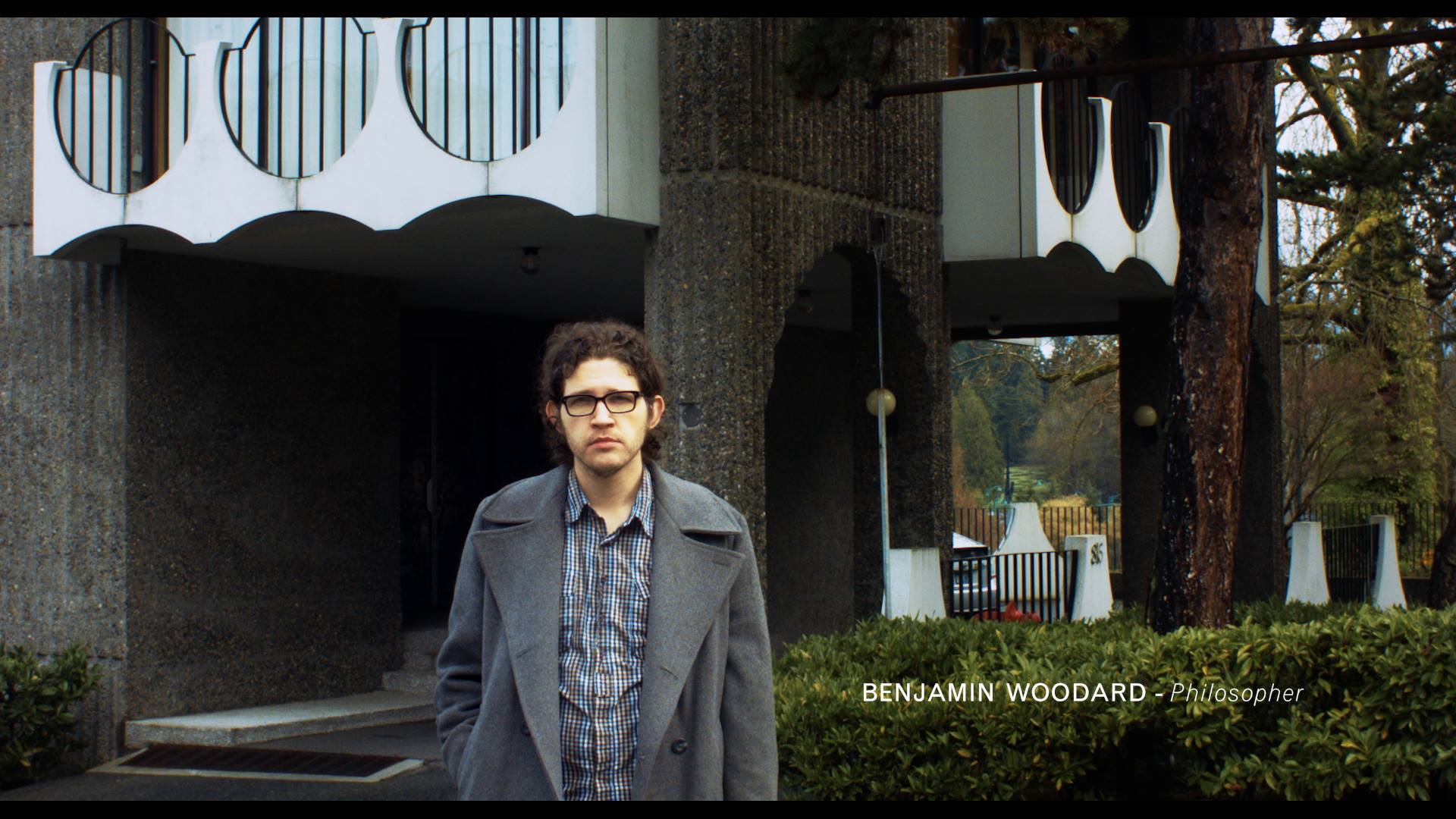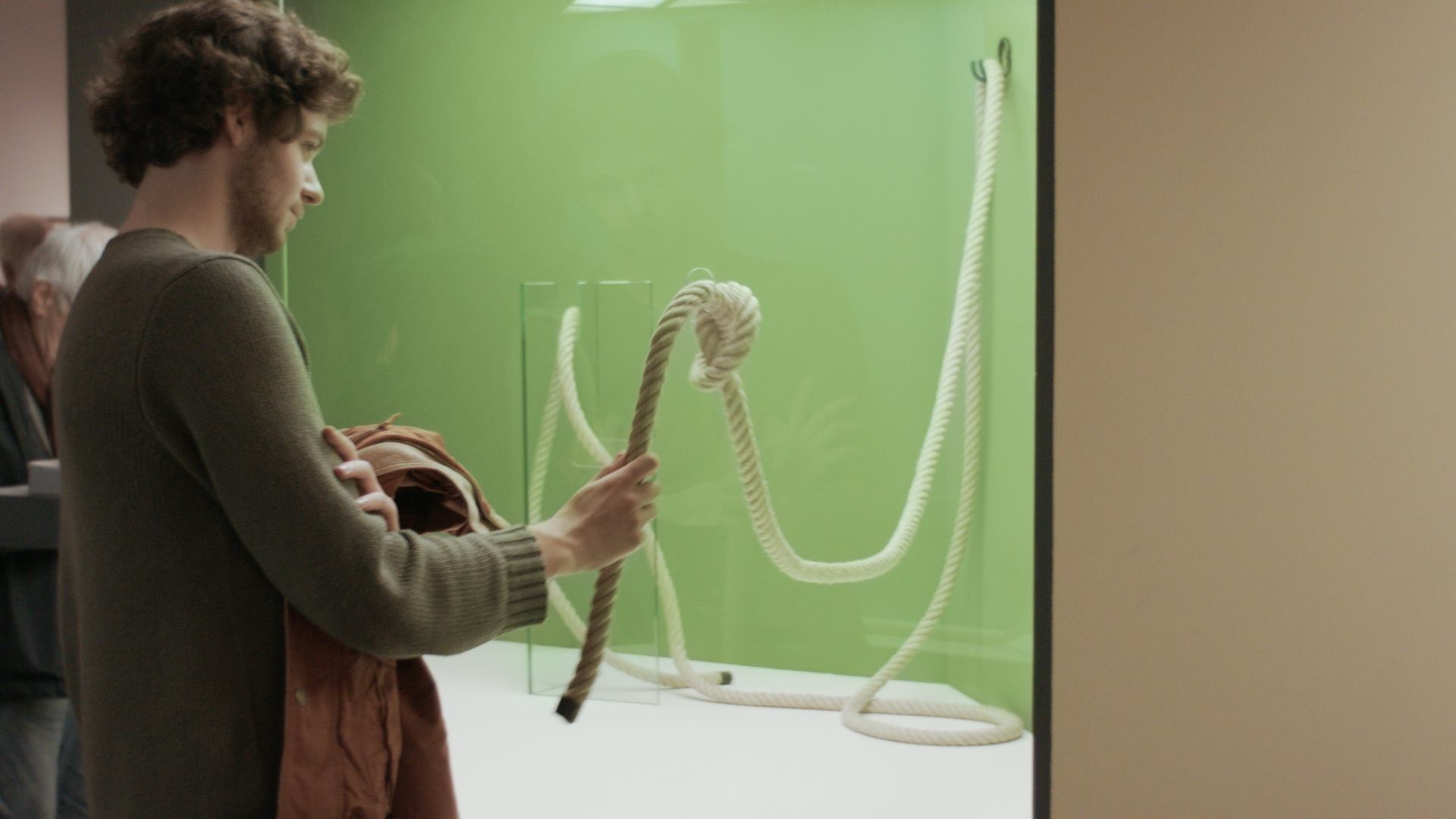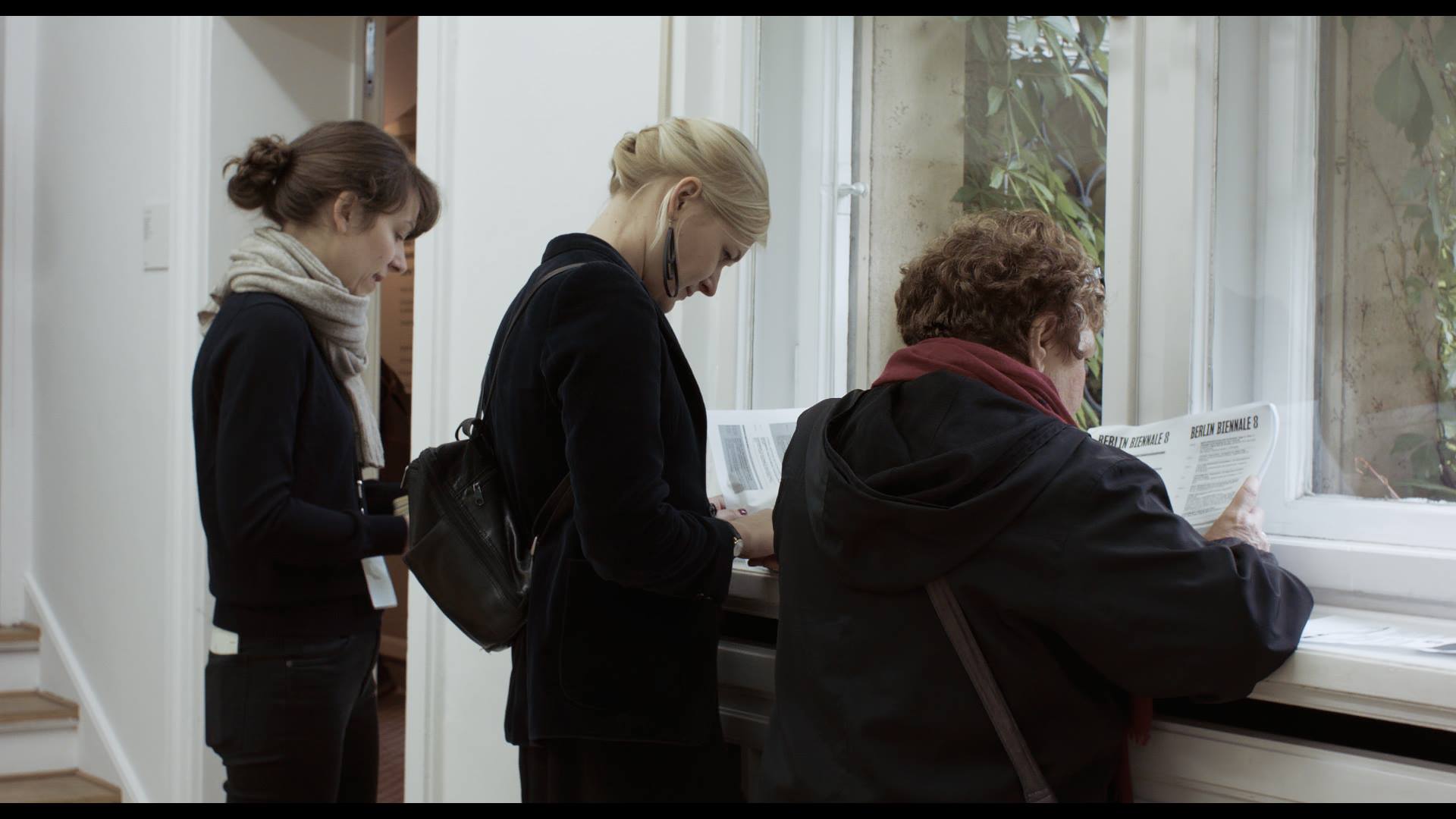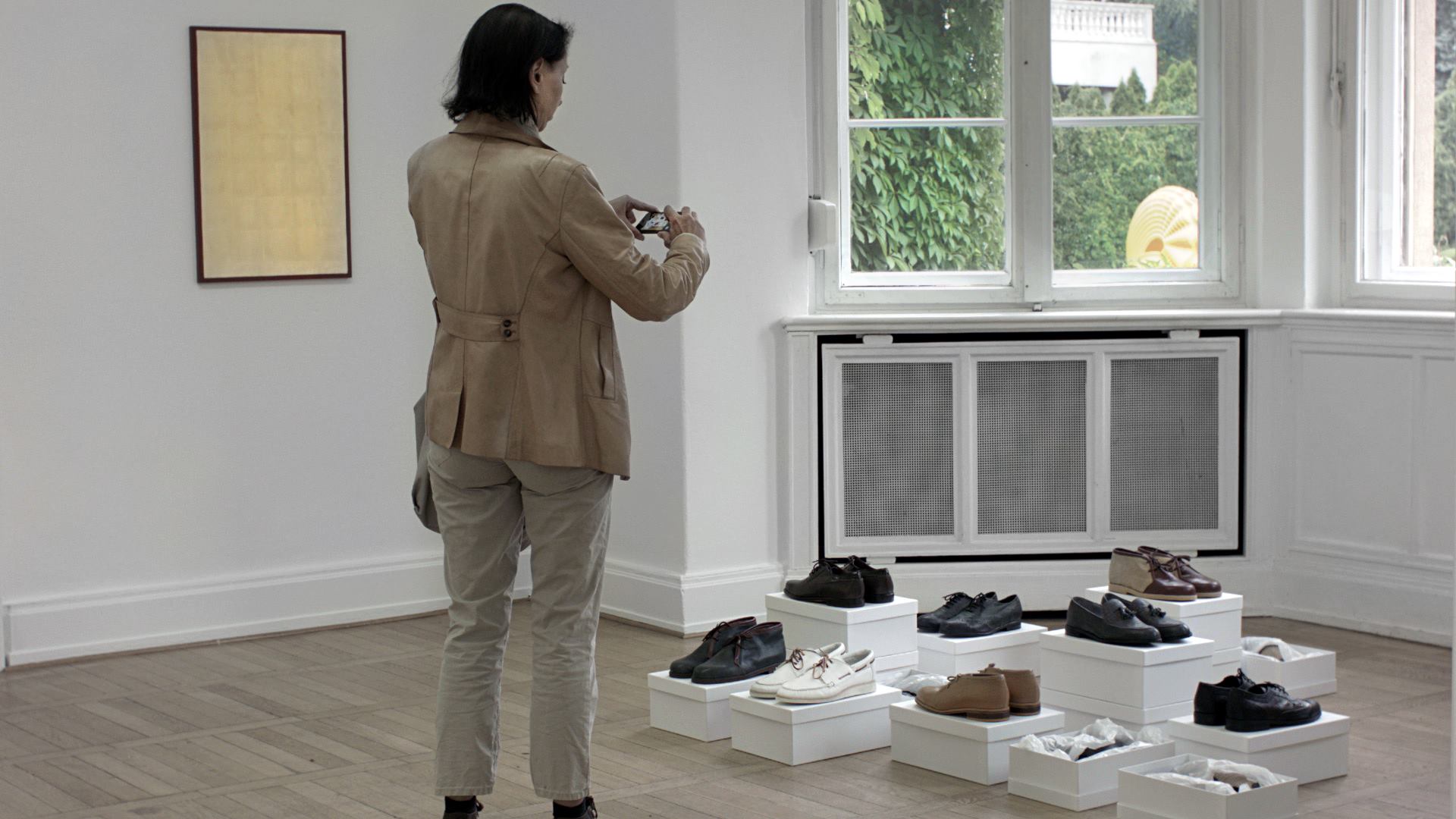Ben Woodard is a philosopher whose work centers on philosophy of nature, specifically, the philosophy of German Idealist F.W.J. von Schelling. The following interview, “Ben Woodard: Embracing the Digital,” was conducted by Manuel Correa and features in the documentary #ARTOFFLINE.
Ben, How does philosophy account for the arts’ embrace of the digital?
For the most part, it is apparent that art is not embracing the digital, and doesn’t recognize it as a necessary way of viewing almost anything. In turn, it seems that art often over-determines the digital, in that artists seem to be panicking over how the digital is transforming the content of art into something that artists have no control over. Today, philosophy is important because it can show us that the digital is just a very effective means of breaking down conceptual content–if you will–another form of epistemology, enabling us to break down what sense-content of experience (whether it’s aesthetic experience or another kind) into digestible or articulate parts. I think once the digital is embraced in the art world as a particularly useful form of mediation, art will maybe relax a bit and see digitality for its conceptual efficiency instead of considering it a threat to artistic practices.
Perhaps there is invested economic pressure forcing art to actively refuse and evade the digital? If so, what do we gain or lose by digitizing art?
Once art is digitized, whether its old archives or new works of art being presented in a digital format, you partially usurp art’s designated physical spaces since the ease of accessibility immediately interrupts, or leads to, a redrawing of the immediate financial model of art. Naturally, the art world needs to archive and care for art works, but the idea that the digital can get around the entry fees, or megalomaniacal curators or collectors, I think that threatens the automatic financialization of art, which is, I think, good for everyone else, but maybe not so much for museum spaces.
Here in Vancouver, there seems to be a current word trend: Artists seem to be increasingly concerned with the ontological. I am sure you have heard other similar trends of artists “Hack appropriating philosophy” (to quote Reza Negarestani), however, do you think there is something valid or redeeming about the use of ontology by artists?
I am skeptical about the use of ‘ontology’ by artists, mostly because ontology is meant to be a generic and lean tool to explain what there is in the world –- I think to say that there’s an ontology of photography or an ontology of painting is an abuse of the word. Ontology is meant to be a descriptive tool for talking about being–for what there is in the world–and useful in describing how particular human or natural practices function. So, to speak of an ontology of photography or an ontology of painting is, on the one hand, to try to borrow the specificity and precision of ontology. By restraining it to a particular artistic practice, it attempts to give the artwork or practice a kind of essence or core that’s deeply philosophical. On the other hand, this provides the artist or the theorist the tools to talk about it as if it’s something constitutive or central to the world, but also still very specific. I think, in the latter’s sense, that artists’ use of ontology is really a way of being specific and particular to the particular domain of art, without having to address the apparatuses in use, the technology, or the very embodied human practices, which are really what makes the art specific. I think that ontology, used as it is often by artists or theorists, obfuscates; it specifies, but abstracts at the same time.
Art seems very concerned with using these concepts to express their ideas and communicate it to their–often fairly specialized–audience. Is it possible to trace an intersection between conceptual art and the idea of the romantic?
Generally speaking, the romantic, whether it’s romantic philosophy or romantic art, is associated with a focus on the subjective: How the world is taken into the subject, and how the subject absorbs the external world thereby generating feelings of the sublime, feeds into how a certain ‘too-muchness’ of art in general is exteriorized yet bound to the subject-as-artist. The romantic is a kind of filtering mechanism. The world is romantic because the romantic subject sees everything as if it is for them. However, there’s another tradition of the romantic, which is often called dark romanticism. Dark romanticism is usually associated with Edgar Allen Poe and Herman Melville, who rejected the traditional romantic idea, and instead saw the world as something that threatens the subject, and threatens the kinds of claims to feeling and aesthetics we can make about the world as if the world is ‘informing’ or lending itself to us to understand its beauty. The traditional romantic impulse, interpreted naively, would be to try and avoid technology. To avoid any kind of mediation, to assume that the subject, whether the philosopher or the artist, can just immediately express the world through the particular concepts they choose, it’s a fairly romantic notion. The embrace of the technological is often seen as destroying these concepts or threatening this kind of direct mediation, when in fact any form of the use of “the concept” is itself already a form of mediation, and in a sense, it’s already a particular cognitive technology. The fact that it could be an external tool used by a technical device is really not different in kind from using concepts in artistic practices. I think this ‘getting away from technology’ can’t be separated from abandoning the specificity of concepts themselves.
What does art do?
I have two very different answers: one cynical and the other is optimistic. The cynical answer has more to do with the art world than about art itself. I would say, for the art world, art is an efficient way of laundering large amounts of money, of congealing capital in a few objects which can be moved more or less discreetly on a global scale, and it’s something that has been happening for many hundreds of years, if not longer. So, in that sense, art functions as a very intricate money making device, whether that’s between private collectors or public spaces. The very use of art in the public spaces can be seen in an equally cynical way, which Foucault and others have talked about; as a function of a very subtle means of population control. You know, “let the populace see the great things and they’ll be happy,” which is pretty depressing, but maybe true. There’s no reason in terms of the art market for artworks have to be available, they could easily circulate between private parties or smaller organizations and then perpetuate itself in terms of capital. For quite a while, museums were often collections that were owned by churches or other powerful organizations. Why even open up museums or artistic spaces for art to the public? These spaces don’t often make a lot of money, so I think it’s partially in order to let art seem publicly available to people as a cultural good. In addition, it helps to cover over the back channels of the art-world as a kind of financial cronyism, while also allowing very truncated and controlled viewings of it by the public.
What is the end of your cynical view?
In the context of the art world, art mostly creates an image of itself as not being subject to capital or to governmental control, the way that it is substantially. But I would say, in an almost romantic sense (in the way Schelling views art), is that art tries to represent nature. Not necessarily in a direct sense, like you paint a nice field and in that painting, you’ve represented it one to one; embracing that you’re capturing something very fundamental there. But even in abstract painting and various forms of sculpture or digital art; that what you’re really trying to capture is a representation of the process of representation itself. That’s basically how Schelling discusses art. To say that art represents nature, you’re not saying that art represents a representation of nature in an image, but that an image is actually pointing to the processes within nature that creates not only what we would call natural objects – plants or animals – but also thought. So art in a sense, is thought’s attempt to capture itself as a creation of nature, as creation. To me, this has a lot of potential, I think art ,when it’s good, can capture the very specific way in which concepts are created and can be deployed. It’s thought demonstrating or diagramming itself in an instructional way without appearing instructional. So that’s my romantic view, but I would say it’s the more dark romantic view.
Against the traditional romantic view that art can capture the way in which the world feeds into the subject and lifts it up or shows how the world is for us, the dark romantic view generally sees nature (or the world) as a powerful force. Not necessarily one that has any interest in us understanding it or even continuing to be. The dark romantic view is basically that we have to come to terms that were are crushed by nature, that nature is massively influential on us, but not necessarily in a good way. Art, in this dark romantic sense, is similar to Schelling’s view of art as an attempt to capture the relation between thought and nature; between nature and us. Further, that it isn’t just for us. Art.doesn’t just reflect back to us our wonderful capacity to make it.
Does technological development change the way philosophy conceives art?
Often a lot of contemporary theorists or philosophers who talk about art are talking about earlier works,as if the digital turn hasn’t happened or with the belief that digital technologies are only an outside threat to art, and not intricately a part of it. Jacques Ranciere, for example talks about the distribution of the sensible, the idea that art has this capacity to create and push forward certain political concepts and to make them available to many people, which I think is a very outdated view, relates to the relationship between epistemology and ontology, that if we develop technologies that tell us more about fundamental aspects of the world, or even cognitive science or technologies that tell us about how we think or how we perceive, this information or data that we can derive from them of course includes and effects art. Whilst philosophy should not necessarily agree with, or follow science wholeheartedly, however, it can accept that (based on decades and decades of the scientific method’s success, as proven by the creation of technological devices, and their efficacy in the world) if technology can tell us about how perception itself functions–how human minds are affected by and reshaped by aesthetic experiences–then philosophy has to take this into account. If technologies can decompose art as this raw given aesthetic experience, we can bring art down a notch from the romantic sense, and accept that the experience of art is not different in kind from our interaction and perception of other objects. I think philosophy and art has yet to come to terms with that.
Many new rationalist philosophers and intellectuals, like Reza Negarestani or Mohammad Salemy insist that Contemporary Art is at a standstill, do you think that the institutionalization of art is partly to blame for encouraging this scenario?
Any kind of institutionalized creation of humans has to go somewhere and has to progress, if not necessarily agreed upon a teleological sense, we might not be able to say art is getting better, but art is changing in ways that are intentional and unintentional as with anything else in history. I think the ideology of art (in it’s romantic in the subjectivist sense), presents art as something that reminds us how human we are, and makes us feel good about ourselves because we can enjoy these “wonderful” things we’ve created. I think this ideology is horribly restricting because it already assumes we know what art is, and that we know art’s relationship to the human and encourages us to just play that out infinitely. In this sense, art can seem like it’s progressing or changing without doing so in any fundamental sense. This relates to the technological; the idea that how we perceive should change, new technologies come about or we discover things about already existing technologies which can change our capacities for doing and seeing art, that should give us at least options in terms of where we want to go with art. We need to abandon the idea of art as objects or things produced, collected put in a space so that we can then pay small amounts to see and then feel good about ourselves. Peter Wolfendale says that the problem of contemporary art is that when someone goes to a museum to see contemporary art they look a the description of the artwork, they look at the curatorial notes and they understand how they’re supposed to feel, so he called it a placebo effect of contemporary art, the idea is that ‘well this is an object of contemporary art and so I should feel something, so I’m going to put a feeling on it, ah and now I feel good about myself’ and so I think as long art continues to be this sort of emotional feedback loop it will be at a standstill. It’s really the frailty of the human and it’s productive capacities which have to be destroyed.
Can art being online help us open up different ways of engaging with it and circumventing the “Placebo affect” you describe?
The Internet is deceptively open, so much of network technologies are controlled by governments. But on the other hand there’s nothing stopping putting art or sharing art in massive archives or shows on the Internet as long as people have access to the images or to music or whatever it is, they can upload it and people can view it. So, in that sense, it’s an institution in that it relies upon particular pre-existing protocols and controls and formats, which of course are changing all the time. And yet, they still manage to escape on the fringes. So it’s an institution, but it’s one that relies so much upon public or common work and influence that it’s a very unpredictable institution, so I think in that sense, it’s one that can continue to change what art can do or that what art is.
However, I think the issues again are getting over where art is supposed to be. There’s still a sense that art on the Internet is not really even comparable to seeing art in space. I think that’s something that should really be thought through because I think the Internet has a lot of potential.
Do you think that works absorbed in the familiarity of the Internet lose their protocol of reverential respect? Why or why not?
Partly it’s just anything on the Internet is cheapened or is viewed as less than real life, whatever that is. And this is not only true of art but true of things like social interaction, dating is still kind of a joke for many people when it’s online, there’s too much mediation, you’re not really yourself, or in terms of art or media, that what you’re viewing is a poor version low resolution idea of reality. But a lot of that stems from initial technological limitations which clearly rapidly change. My hope is that people will get over the idea that because something is widely accessible and online it does not devalue its potential effects; whether it’s inspirational or whether it’s just a knowledge production. I hope people will get over that sense, which was also called the ‘poverty of the commons’. The idea that because something is open and free it’s of lower value. Where as open source projects have beaten that idea to death quite effectively, to find somebody now that would say Wikipedia is not useful because it’s open, I think is harder and harder… so I hope that would have some of the things would happen in the art world, that availability trumps it’s purported reverence.
It’s hard to divorce the importance of art’s locatedness in physical spaces like galleries and museums from the fact that this has just always been their history. As far as I know it’s only until the enlightenment that the public museum becomes a widespread concept. So, on the one hand, art as public space is restrictive, certain things are put in storage certain things are not allowed out. If you’re looking at it in a physical space or not, you’re always getting a limited view of what there is by physical limitation; whether digital or items of space on a wall, there’s only so much that can be put in one place. Beyond that, I’m not really sure if I see a particular importance to galleries of museums beyond being able to collect. So the people who do restoration or care is probably historically the most important part of museums or galleries, but beyond the limited control and having to locate the art in physical word and having to go there to see it should no longer be an option (but I would hope that’s no longer the norm). I think digital viewing of artworks is getting better and better. Having more people able to see more kinds of art shouldn’t threaten art. And if it threatens art, it’s because the art world is afraid of its financial model collapsing and nothing else.
I’m sure as soon as art becomes more and more digitally archived their will be ways to try to financialize that. Whether it’s through advertising or through data tracking, etc… It may be naïve to think that art cannot break out of a financial model, but I would hope that, like other mediums that have benefited from becoming more digital or becoming on the Internet, that you could have more money going to the artists directly than to galleries or curators or this institution that collects them. And we’ve already seen this with music. Many musicians easily put their work online and get paid directly for their production and not have to deal with the edifice of the music industry which takes lots of money from them mostly to waive legal battles for instance… So, I would hope the more open model (digitalization of artwork) would be possible in a similar vein, that the artists would benefit.
Beyond that, the real question, which is one that relates to philosophy and art history, is whether being in the presence of a work of art physically is different in any way than viewing it digitally, beyond having to pay to be in the space and to be part of a particular show to feed into that financial system. I think the real philosophical question is: does physical presence have an effect that the digital cannot have? That’s a very fundamental question. Partly getting over the artificiality of mediation, instead saying that mediation is just how we function–our vision is a mediation, our hearing is a mediation–everything is already conceptualized. Everything we sense, that we think we can absorb in this romantic way, as soon as it actually gets to the part of our brain where we can think about it, (where we can say, ‘oh this is a very impressive work of art for these or that reason’) it has already been conceptualized. And to not think so, to think that being in the presence of the physical object gives us some immediacy would be the fault prey to what Wilfrid Sellars called this myth of the given. He argued that to have this naïve phenomenological view, that being in the presence of something gives us this immediate understanding of it in some sense, is just philosophically naïve. So the real question: is there really something about being in the physical presence of art objects? Especially if you can’t touch them (laughs), especially if they’re given an artificial reverence in their isolation in the gallery space. Even when you could interact with them digitally in ways you couldn’t if you were there physically? (for instance you could zoom in 1000x on a Monet or on a pointillist painting.) The fact that it’s mediated actually gives it more reverence, more depth than this romanticized idea that ‘oh, I could almost touch it’.
Artists are afraid of losing control over how their work is viewed or displayed, and I think that accounts at least partially for their fear of technology (we can certainly trace this to the late 19th century invention of photography). Do you think that there is some sort of faustian bargain or tradeoff that occurs when you photograph or digitize and artwork that might fundamentally hurt the piece?
Part of that is, to give one hypothesis, the artist probably has a particular vision of what they want. For instance, what a photographer wants a picture to do. In other words, if they want it to be imposing they might make it gigantic and want you to feel overwhelmed by it. So, on the one hand, formatting or being in the physical presence of an art object, you could argue, gives the artist more control, or the artist can better express their intent (“I want this work of art to do this”): to impose, to threaten, etc… Of course that’s always a gamble. You never know how the people are going to respond to it. Whereas in the digital space, you have less control–take the simple fact of zooming. With digital technologies, people can now save, manipulate, and do whatever they want to the image quite easily. However, I think it’s naïve to assume that the intent of the artist would be lost in the digital space, because the image of the work is still being experienced, whereas the format may not be. I feel like that minimal loss of the artist’s intent is far outweighed by the potential of having images be more accessible and more manipulable. The work of art that survives or resists digital forms of manipulation and various forms of viewing, I think points to some core or at least some interesting concepts about the work of art. I think how it resists various digital tortures is a lot more interesting than having one particular lighting effect, or having the size of the photograph being there. So, I think this points to the fact that because our experiences are already conceptually mediated that extra mediation or extra forms of manipulability allowed through technology just tests the limit of our ways of conceiving and also tests the concepts that were attempted to be built into the art object itself. If the artwork is meant to be conceptually productive, then the physical artistic space is the last vestige of a romantic dream of control that many artists want to have. That, for the art to be out there, may be threatening to a certain sense of the fragile artist and their intent or what they think they can do for the world. But, in giving that up, they’ll actually be able to do much more!
In 2015, making selfies is part of the experience of visiting a museum. Digital technology has completely transformed the experience of art forever; #ARTOFFLINE provides an insider’s view of the contemporary art world, and explores the significance of audiences choosing experience art primarily through digital devices. This documentary illustrates the ways in which digital technologies are also creating new audiences, and a participatory culture that exists outside of traditional elite spaces for art. Filmed in Vancouver, Köln, Colombia, Oslo and during the 8th Berlin Biennale for Contemporary art, the artist and director Manuel Correa takes us behind the scenes, and provides a glimpse inside the minds that are already shaping the art of tomorrow. #artoffline
